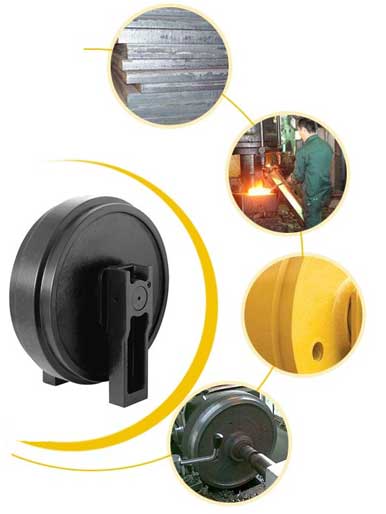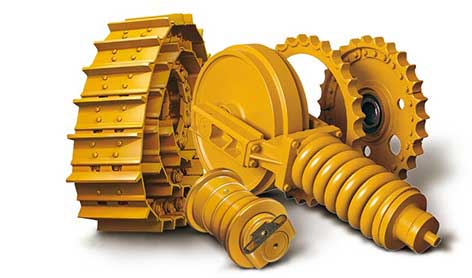All the performances of 35MnBH steel could meet the requirements of technical conditions through such measures as micro-alloying, establishing strict and reasonable production engineering as well as narrow control for composition of molten steel based on those of 35MnB.
Mainly used in Excavator and Bulldozer undercarriage manufacturing, 35MnBH steel Requires high purity and uniformity of ingredients to reach good organizational structure, mechanical properties and good quality of the appearance. It’s chemical composition is as following.
| Chemical Composition(%) | Low Magnification | |||||||||||||
| C | Si | Mn | P | S | Cr | Ti | Als | Ni | Cu | Mo | B | General Loosen | Center Porosity | Center Segregation |
| 0.38 | 0.24 | 1.24 | 0.017 | 0.002 | 0.21 | 0.042 | 0.031 | 0.01 | 0.04 | 0.01 | 0.0018 | 0/0 | 1.0/1.0 | 0/0 |
The main spare parts of undercarriage is track link, which is made of 40Mn2 steel or 35MnB steel and plays the role of connecting the track shoes and transmitting power. For the normal Excavator track link, it's made of 40Mn2, but for the Bulldozer or Excavator which working in a serious environment, use 35MnBH steel to make the track link will be the first choice. The physical property is as following.
| Grain Size | Hot Upset | End Hardenability HRC | Mechanical Properties | ||||||
| C.H.T | J1.5 | J8 | J19 | Yield Strength | Tensile Strength | Elongation | Cross-sectional Area Reduction | U-shaped impact | |
| ReL/Rp0.2 | Pm | A | Z | KU2 | |||||
| (Mpa) | (Mpa) | (%) | (%) | (J) | |||||
| 8 | Qualified | 56 | 54 | 32 | 835 | 945 | 20 | 64 | 136 |
All the oil track link and other high-quality track links manufactured by YINTAI are made of 35MnBH steel bar, this makes our track link have good combination mechanical properties and maximize the life span of each component and minimize production cost per hour.




 components. Look for any bent or broken track links. If any issues are identified, they should be addressed promptly by replacing or repairing the damaged parts.
components. Look for any bent or broken track links. If any issues are identified, they should be addressed promptly by replacing or repairing the damaged parts.
